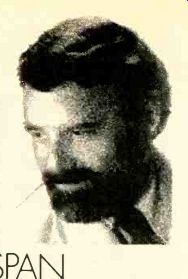
by Martin Bookspan
SCHUBERT'S STRING QUINTET IN C MAJOR
A FEW months ago in this space I selected Mozart's Clarinet Quintet as the ideal work with which to begin a collection of chamber music. I hope many of you have grown to know and love that marvelous work in the intervening time. Now I want to direct my attention--and yours--to another kern from the chamber-music repertoire, the String Quintet in C Major by Franz Schubert. Quite simply, if all music but one piece were denied me, I would unhesitatingly choose the Schubert Quintet as the one without which life would really be considerably less bearable.
Schubert composed his C Major Quintet during 1828, the final year of his incredibly short, thirty-one-year life span. All his ". . .very early in the quintet we realize how absolutely right the combination of instruments is." preceding chamber music seems to be a preparation for this sublime masterpiece, the final summation of the composer's emotional range and formal perfection. The year before, he had written two superb piano trios-in B Flat, Opus 99, and in E-Flat, Opus 100. In the two of them he thoroughly explored the color possibilities of the piano-violin-cello combination. Compelled by some inner impulse to return to music for strings alone, he passed over the string quartet format-he had, after all, composed many quartets-in favor of the quintet.
For his model Schubert turned to the quintets of an earlier composer, the Italian Luigi Boccherini, and he scored his music for two violins, a single viola, and two cellos. No doubt it was the brighter, more vibrant sound of the cello against the sound of the viola that attracted Schubert. Indeed, very early in the quintet we are made to realize how absolutely right the combination of instruments is: the second theme is first stated by the two cellos in a soaring melody of indescribable beauty; immediately we are enveloped by the rich, full, almost orchestral sound.
The tonality of C Major generally creates an atmosphere of triumphant life assertion witness Mozart's Jupiter Symphony, the Finale of Beethoven's Fifth, or Schubert's own "Great" C Major Symphony. The mood and message of the C Major Quintet, however, are something quite different. A feeling of intensity and resigned struggle is conveyed at the very beginning, and the development section of the first movement establishes a sense of anguish. It is the slow movement, an Adagio in E Major, that is the crown of the work. This is music of transcendent poignancy and passion. The middle section, by contrast, is a stormy, agitated outburst, of which a fleeting reminiscence returns near the end.
The movement subsides in the inspired beauty of the opening E Major. The Scherzo is frenzied, propulsive, seething with energy. In the contrasting, rather somber Trio section some commentators have divined the shadow of impending death. The last movement is, for the most part, a release of tension, but near the end the music is abruptly driven into the despair of F Minor and the shadows take over once again.
OF the eight currently available stereo recordings of the C Major Quintet, the two most recent are in many ways the pick of the crop: the Juilliard String Quartet with Bernard Greenhouse playing the second cello (Columbia M 32808) and the Guarneri String Quartet with Leonard Rose as the added member of the ensemble (RCA ARLI-1154).
Both performances are totally committed and penetrating. The Guarneri/Rose combination underlines the stress and tension in the score while the Juilliard/Greenhouse ensemble emphasizes the beauty and color of the music its spirituality, if you will. And the different characteristics of the recorded sound match the individual performances: RCA's for Guarneri/Rose is in close focus and gutsy, while Columbia's for Juilliard/Greenhouse is warmer and airier.
A distinguished mono recording from the not-too-distant past is also still available: the performance recorded at one of the European Casals Festivals with Isaac Stern and Alexander Schneider, violins; Milton Katims, viola; and Pablo Casals and Paul Tortelier, cel los (included in Columbia M5 30069, five discs). This is an extremely broad and easy-going performance-too much so, for my taste, for the passion and intensity of the music. But one does come away from hearing it with a sense of musical fulfillment despite moments of less than ideal ensemble unity.
Also see:
Source: Stereo Review (USA magazine)